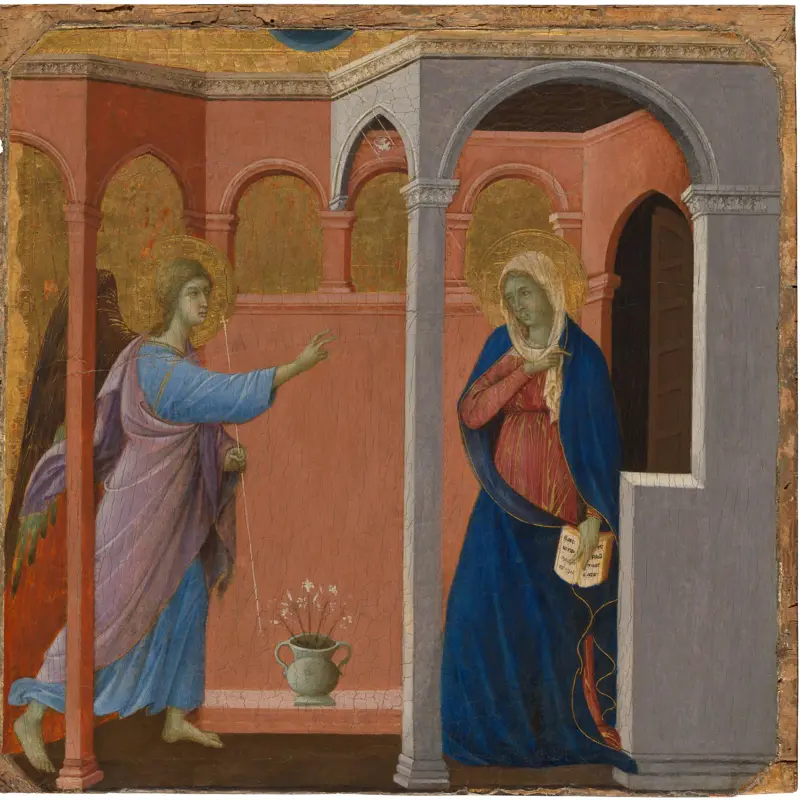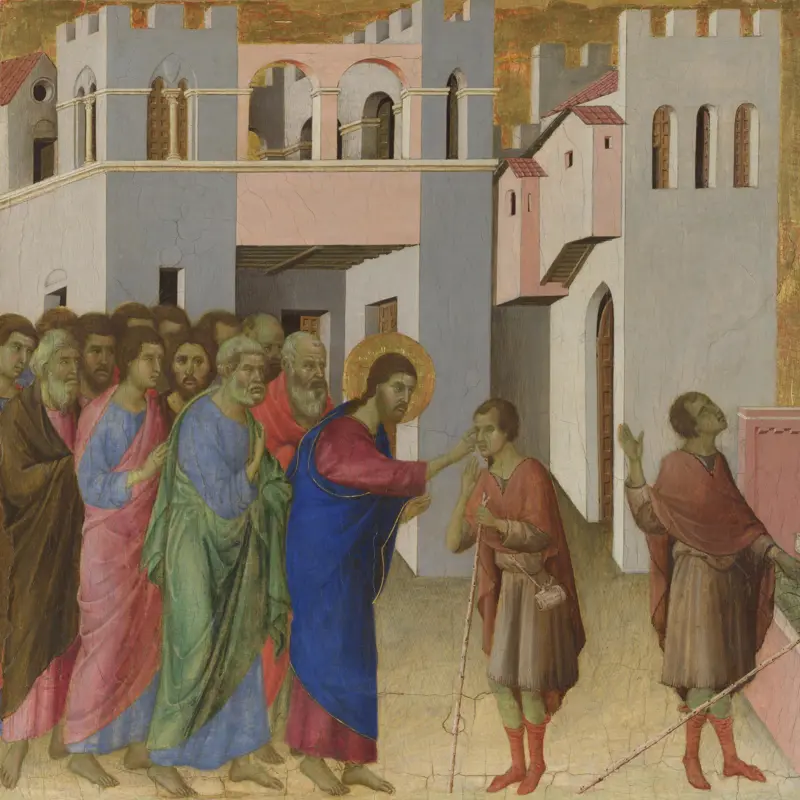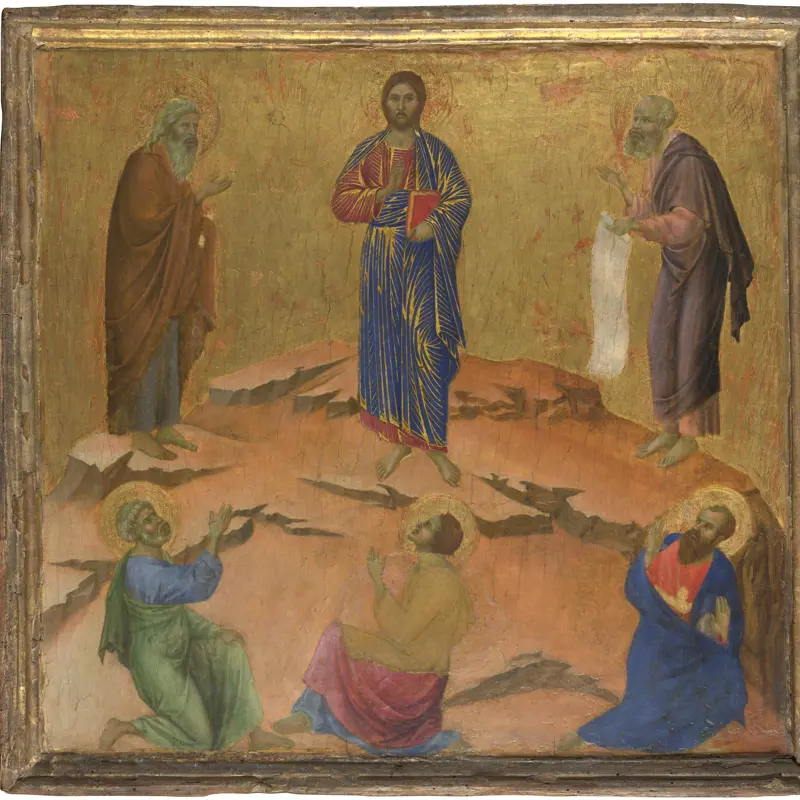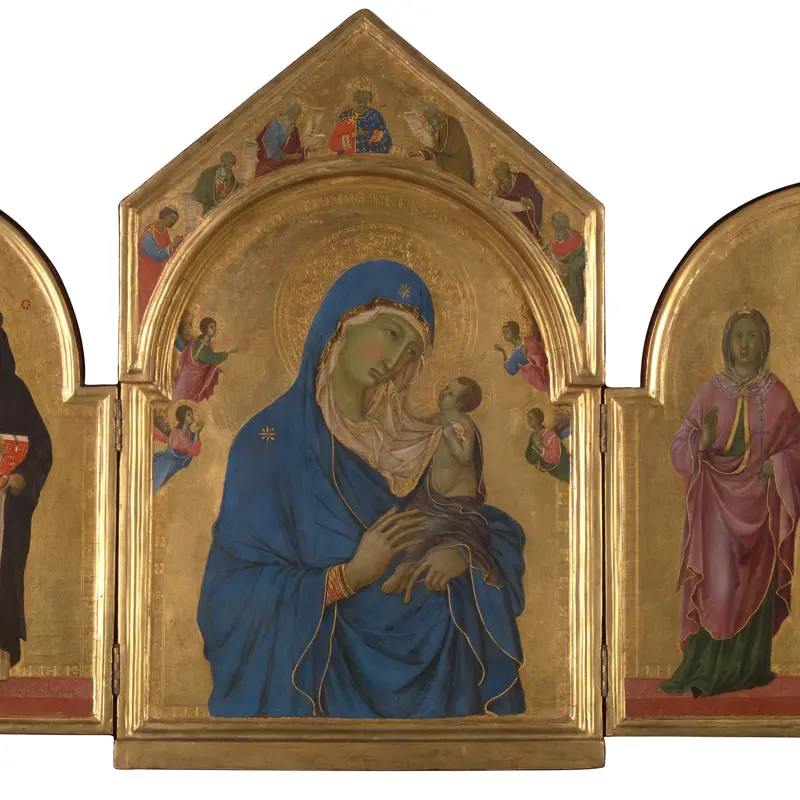Duccio was one of the most important painters of 14th-century Italy. He ran a large workshop which shaped generations of Sienese artists. His pupils were influential on Florentine art.
His greatest work was the double-sided altarpiece, the 'Maestà', made between 1308-11. The Gallery's 'The Annunciation', 'Jesus opens the Eyes of a Man born Blind' and 'The Transfiguration' are fragments from it.
Duccio's date of birth is not known but he was active in Siena by 1278, and spent most of his working life there. He is unusual among medieval artists for being well documented. Duccio's art is based on Byzantine sources, but was deeply influenced by the sculpture of the Pisani and by French Gothic metalwork. His work is both decorative in the use of line, colour and pattern, and highly expressive. He is less interested in volume, than his younger contemporary Giotto.
'The Maestà' was one of the largest and most complex altarpieces ever produced. Its influence can be seen in the predella panels for an altarpiece by the Sienese painter Ugolino, which imitates the treatment of subjects in the 'Maestà'.
Duccio
active 1278, died 1319




